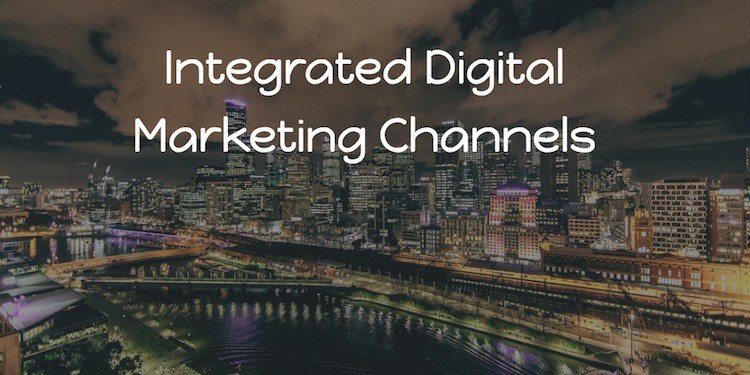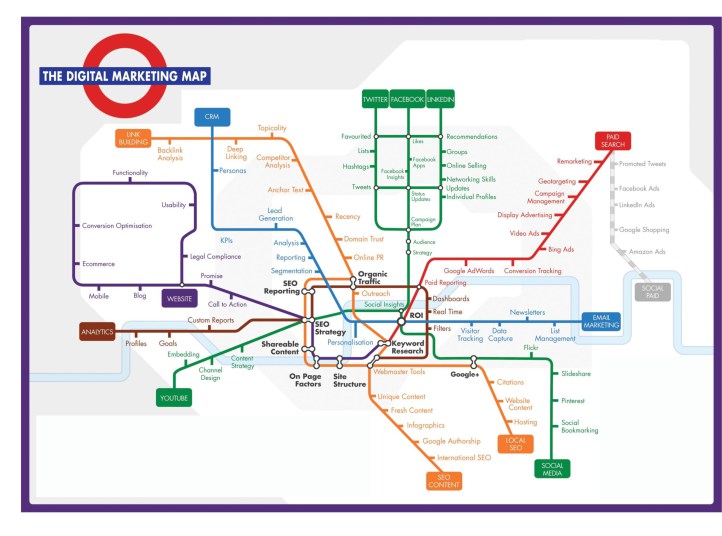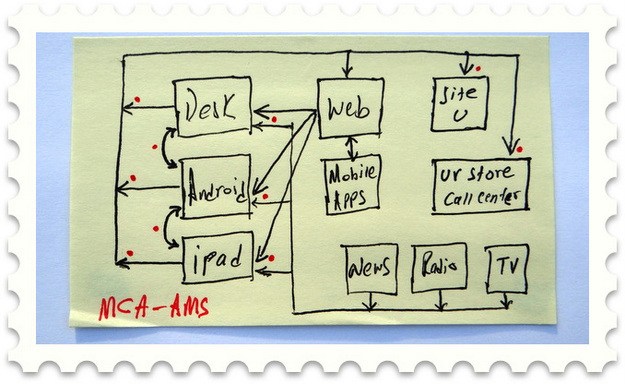
Creating a digital marketing strategy can be tough, even for big companies, because successful methods keep changing. Updates to Google’s algorithm, email filters, reduced engagement on Twitter, changing demographics on digital platforms, and new phones with ad blockers are just a few recent changes that can affect your marketing success. As you add these to your list of strategies, remember to include integrated digital marketing channels as a key priority.
Integrated digital marketing channels
First, let’s look at what AJ Agrawal has to say about digital marketing channels (be sure to check out the hyperlinks in this quote as they’re golden):
The digital age has altered how businesses market their products. It has completely altered the playing field so companies have to tailor their strategies to reach their customers. It’s led to a rise in new companies, but in many ways it’s made it more difficult to succeed.
A huge marketing budget is no longer enough to take advantage of these marketing channels.
Also, I found a pretty comprehensive list of digital marketing channels from Digital Marketing Philippines that includes:
- email marketing
- display advertising
- pay-per-click advertising
- content marketing
- search engine marketing
- social media marketing
- affiliate marketing
- online public relations
Obviously, there’s some overlap, for instance content marketing supports SEM, while acting to establish the firm as a thought leader, generate leads, and reach other goals. This infographic (using the London Tube system) shows the major relationships among the channels and digital marketing strategies (click image to enlarge ).

Comparing digital marketing strategies
At the end of this post, you’ll find an infographic illustrating which digital marketing strategies give you the most bang for your buck. Here are the highlights:
Organic search, followed closely by email marketing is best for delivering visitors to your website
For B2B customers, all the channels perform well, except pay-per-click
For B2C customers, search is king, with pay-per-click a distant second
Organic search, followed closely by email marketing delivers the best ROI
How digital marketing strategies have changed marketing forever
According to Forbes, digital marketing wrought 5 strategic changes you can no longer ignore even if you only use traditional marketing tactics, which begs the question: WHY are you still using traditional marketing tactics alone?
The 5 changes are:
- Ads can’t be ads
- Customer service is always on
- Traditional advertising, especially when used alone, is D-E-A-D
- Because marketing costs are substantially lower in digital, the playing field is more level
- Emerging pay-to-play models mean digital advertising is no longer free
The Forbes list echoes my post on 16 differences between digital marketing and traditional marketing. You can find that post here.
I wish I could spend more time on this, but I need to get to today’s main topic, which is using integrated digital marketing channels. If you want to learn more about how digital marketing has changed traditional marketing, feel free to ask questions in the comments.
Integrated digital marketing channels
Let’s recap.
We know a number of digital marketing channels.
Some channels perform better than others – with organic search coming out on top in performance for almost every goal by a significant amount.
Does that mean you should shift all you digital money into search?
Well, not quite. It means that integrated digital marketing channels should include search as well as other channels in a cohesive fashion. That way, you optimize your performance.
The starting point for any integrated digital marketing strategy is content and, for organic search, it commonly means content on your company website. Sure, you can just use social media content shared on Facebook, Twitter, etc and, with ecommerce options on these platforms, you can monetize your social content without a website or send customers to a brick and mortar, again eliminating the need for a website. However, this strategy costs you the most valuable marketing channel: search (with the exception of G+, which is indexed in search results).
Now that you’ve accepted the inevitability of creating content on a company website, let’s talk about how that is integrated into other channels.
-
-
- Content should be SEO optimized to rank well in search. That means finding a dozen or more keywords representing terms your target marketing might search looking for your products. If you sell costume jewelry, for instance, here are some keyword suggestions from Google’s Keyword Planner (sorted by number of searches per month)
Choose keywords that have a good bit of traffic and less competition (notice the high, medium after the search count) then construct long-tail keywords (phrases containing the keyword) to create content. Use a plugin like Yoast SEO to help with the heavy lifting involved in on-page SEO and use a well-written theme, such as Genesis, to handle the coding necessary to optimize SEO - Share your content to owned social media sites, such as Facebook, LinkedIn, etc, as well as sharing it with influencers who might also share your content. BTW, social engagement also wins SEO points for your content, so you get a double whammy from social. The more valuable your content, the more engagement (and message amplification) you get.It’s perfectly ok, in fact, even advised, to share your content multiple times. Here’s the schedule recommended by Buffer — as an aside, my daily visitors doubled when I implemented this schedule.
- No one is interested in following or engaging with someone who talks about themselves all the time, unless that’s somehow valuable to your audience. Plus, you’ll get more engagement if you share the content created by others because they’ll reciprocate by sharing your content.In digital, it’s often best to use and 80/20 ratio by only mentioning your brand in 20% of your posts
- Monitor, which is out next topic
- Content should be SEO optimized to rank well in search. That means finding a dozen or more keywords representing terms your target marketing might search looking for your products. If you sell costume jewelry, for instance, here are some keyword suggestions from Google’s Keyword Planner (sorted by number of searches per month)
-
Monitor integrated digital marketing channels
Here, we need to talk about attribution — which channel or channels get credit for a goal such as conversion or lead generation?
First, which is what was used in the infographic below?
Last, which is commonly used by many analytics products?
The answer is neither. You need to give credit to ALL the channels that contributed to goal completion.
In today’s world, a visitor might come through your social ad on their smartphone, then respond to a pay-per-click ad they saw in a desktop search, then sign up on your Facebook page on mobile, then return based on an email you sent before buying your product.
The best solution to attribution in this purchase is to attribute a portion of the sale to each channel on each device. Such attribution modeling is a little complicated, but well worth the effort in terms of enhanced insights that allow you to effectively optimize your channel strategies.
Here’s a neat little infographic from the attribution wizard, Avinash Kaushik of Occam’s Razor. You can learn how to implement attribution models on his website (plus a whole lot more cool Google analytics stuff).
Image courtesy of Occam’s Razor
Final words
If you have questions, please feel free to ask in the comments below. I’m always happy to help.


